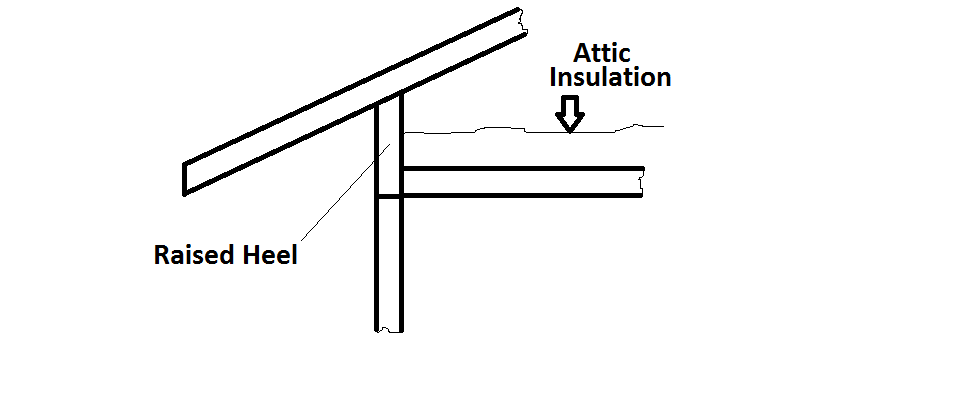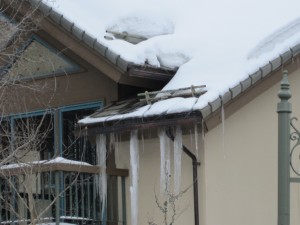Raised Heel Truss
0 Comments | Posted by armchairbuilder in Great Products, Quality Check, Save Money
Raised heel truss. Energy truss. High-heel truss. These all refer to the idea of creating a roof truss that will improve the energy efficiency of your newly built home. They don’t add all that much cost to a newly built home and the payback for using a raised heel truss can be significant over time.
Advantages to using Roof Trusses
Almost four out of every five homes built today have roof trusses. With those kinds of numbers, there must be a good reason to use them. Here are some great reasons they are better than the standard rafter and beam construction for new homes…
- Costs are lower because smaller pieces of lumber can be used (2×3 and 2×4 instead of 2×8, 2×10 and 2×12’s…which means we save old growth lumber too)
- Can be erected in a day for the average American home…which gets the house under roof quicker = fewer moisture problems
- Increase spans which allow us to open up our homes and eliminate load bearing walls
- Labor to install can be less experienced which reduces costs
Standard Roof Truss
What’s wrong with the standard roof trusses we have been using for years? There are many advantages as listed above. However, now that we are looking at the homes we build more closely to find energy improvements, trusses provide a means to increase efficiency. Take a look at the standard roof truss shown below. The top cord (the portion directly under the roof) is angled down to connect with the bottom cord (the portion that supports the insulation and ceiling drywall below). Because the top cord angles down, it reduces the amount of insulation that can be installed near the outside wall of the home. This reduces the overall insulation value and increases heating and cooling costs.
Raised Heel Truss
The raised heel truss below shows how a vertical member is added to the roof truss to raise the top cord at the eave. This allows us to install full depth insulation across the entire ceiling/attic. Which in turn, improves the overall energy efficiency of the home.
Cost Savings with Raised Heel
Your new attic needs to be insulated properly to create an energy efficient home. Your local code will dictate the minimum insulation value required in your attic. Since standard trusses reduce the thickness of insulation that can be installed, other alternatives need to be found. Spray foam is one example of a method to get higher insulation value with less material. The only problem is, the costs go up dramatically. With the raised heel truss, you can use standard, low cost insulation methods like fiberglass batts or loose fill cellulose. These can be installed at a fraction of the cost of some of the higher value insulation methods.
Other Benefits
Another huge benefit to using the raised heel truss is the reduction in the occurrence of ice dams. If you aren’t familiar with them, an ice dam is basically ice that forms near the edge of a roof above an attic that is not insulated properly. When you use standard trusses with typical insulation methods like fiberglass or cellulose, the R-value is reduced where the insulation thickness is reduced at the eaves. This allows heat to escape which in turn, melts the snow on the roof above. This melting snow can then form ice as temperatures drop at night. When the cycle starts all over the next day as temperatures rise, the melting snow builds up water at the ice forcing it back up under the shingles. This can result in water leaks.
The raised heel truss helps eliminate the ice dam and saves money on heating and cooling at the same time.





